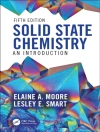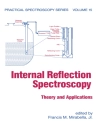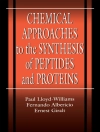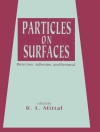Starting from fundamentals and moving through a thorough discussion
of equipment, methods, and techniques, this text provides a unique
reference source for this important new analysis method. The
authors use a combination of tutorial discussions ranging from
basic principles up to more advanced descriptions along with
extensive figures and photographs to clearly explain topics
addressed in the text. It is intended that the data tables will be
located within the Education section of Spectroscopy NOW.com
Provides a thorough but understandable discussion of the basic
principles, instrumentation, methodology, and sampling procedures
of the method based on atomic emission spectroscopy.
* Presents a discussion of the many advantages of the method
along with limitations, to provide the reader a balanced overview
of capabilities of the method
* Presents an overview of some real-world applications of the
method
* Provides an up-to-date list of references to LIBS literature
and a unique list of element detection limits using a uniform
analysis method
Cuprins
Foreword.
Preface.
Acronyms, Constants, And Symbol.s
1. History.
1.1 Atomic optical emission spectrochemistry (OES).
1.2 Laser-induced breakdown spectroscopy (LIBS).
1.3 LIBS History 1960-1980.
1.4 LIBS History 1980-1990.
1.5 LIBS History 1990-2000.
1.6 Active Areas of Investigation, 2000-2002.
References.
2. Basics of the LIBS plasma.
2.1 LIBS plasma fundamentals.
2.2 laser-Induced Breakdown.
2.3 laser ablation.
2.4 double or multiple pulse libs.
2.5 summary.
References.
3. Apparatus fundamentals.
3.1 Basic LIBS apparatus.
3.2 Lasers.
3.3 Optical systems.
3.4 Methods of spectral resolution.
3.5 Detectors.
3.6 Detection system calibration.
3.7 Timing considerations.
3.8 Methods of LIBS deployment.
References.
4. Determining LIBS analytical figures-of-merit.
4.1 Introduction.
4.2 Basics of LIBS measurements.
4.3 precision.
4.4 Calibration.
4.5 Detection limit.
References.
5. Qualitative LIBS Analysis.
5.1 Identifying elements.
5.2 Material identification.
5.3 Process control.
References.
6. Quantitative LIBS Analysis.
6.1 Introduction.
6.2 Geometric Sampling Parameters.
6.3 Other sampling considerations.
6.4. Particle size.
6.5 use of internal standardization.
6.6 Chemical Matrix effects.
6.7. Example of libs measurement: Impurities in Lithium
Solutions.
6.8 Reported figures of merit for LIBS measurements.
6.9 Conclusions.
References.
Chapter 7. REMOTE LIBS MEASUREMENTS.
7.1 Introduction.
7.2 Conventional open path LIBS.
7.3 Stand-off LIBS using Femtosecond pulses.
7.4 Fiber optic LIBS.
References
8. Examples of recent LIBS fundamental research, instruments
and novel applications.
8.1 Introduction.
8.2 fundamentals.
8.3 calibration-free LIBS.
8.4 laser and spectrometer advances.
8.5 surface analysis.
8.6 Double pulse studies and applications.
8.7 Steel applications.
8.8 libs for biological applications.
8.9 nuclear reactor applications.
8.10 LIBS for space applications.
References.
9. THE FUTURE OF LIBS.
9.1 Introduction.
9.2 Expanding the understanding and capability of the libs
process.
9.3 Widening the universe of libs applications.
9.4 Factors that will speed the commercialization of Libs.
9.5 conclusion.
References.
APPENDIX A: Safety Considerations in LIBS.
A.1. safety plans.
A.2 Laser Safety.
A.3 Generation of Aerosols.
A.4 laser pulse induced ignition.
APPENDIX B: LIBS Application Matrix.
APPENDIX C: LIBS Detection Limits.
C.1 detection limits from the literature.
C.2 uniform detection limits.
APPENDIX D: Major LIBS References.
Index.
Despre autor
Professor L.J. Radziemski, Professor Emeritus,
Department of Physics, Washington State University
Dr. David Cremers, Chemistry Division, Los Alamos
National Laboratory












